
If you’re looking for refined aesthetics and improved nasal function after an unsatisfactory rhinoplasty, Dr. Morin offers compassionate expertise in revision rhinoplasty in Hackensack, NJ. With over 14 years of specialized experience, Dr. Morin combines advanced techniques and a patient-first approach to achieve results that meet your unique needs.
Dr. Morin understands how emotionally challenging it can be to trust a surgeon with your nose again after a disappointing primary rhinoplasty experience. Revision rhinoplasty is a journey of hope and healing, designed to address issues from your previous procedure, whether they involve functionality, aesthetics, or both.
With empathy and an individualized approach, Dr. Morin works to correct irregularities, improve breathing, and create the look you originally envisioned. He recognizes the emotional toll revision surgery can take and is dedicated to guiding you through the process with care and understanding. He strives to restore your nose’s appearance and function as well as your confidence and peace of mind.
See how rhinoplasty revision has transformed some of our past patients!
View Gallery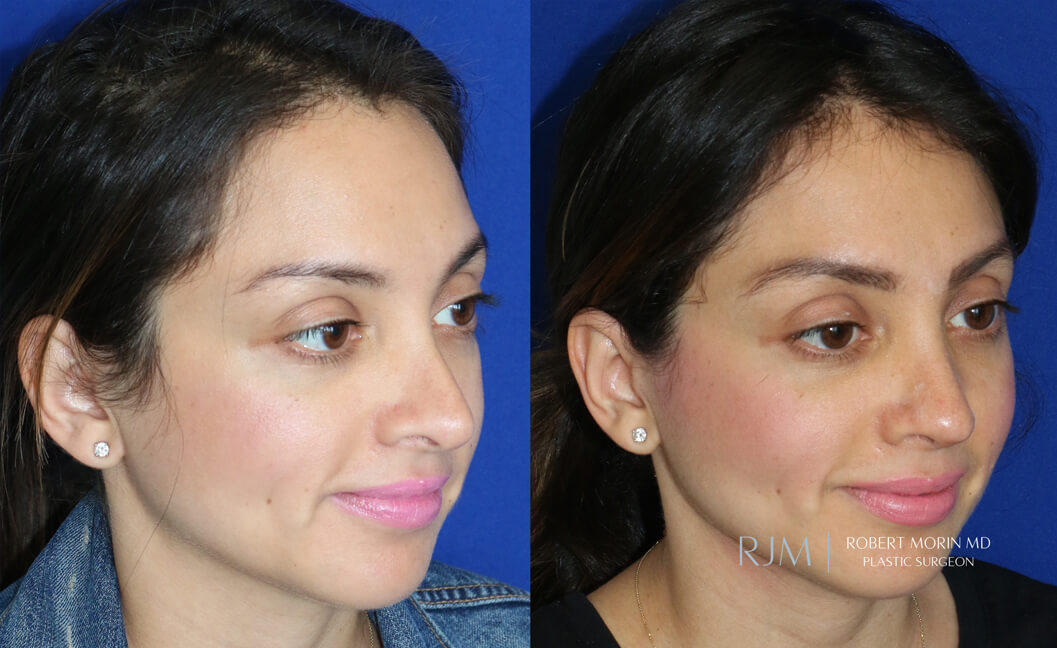
*Results may vary
Issues like lingering asymmetry, breathing difficulties, or unexpected results can be resolved through revision rhinoplasty. Dr. Morin’s expertise enables him to adjust structure carefully, whether adding grafts for contour or refining nasal shape.
Dr. Morin is a compassionate expert in the plastic surgery field that combines a precise approach with a thorough consultation process to ensure your needs are being met at every step of your time together.
Dr. Morin will take the time to meet with you one-on-one to ensure he completely understands where you’re at and where you’d like to be with your rhinoplasty revision procedure. He will listen to your experience and conduct a brief exam of your nose so that together you can build a surgical plan that will get you your dream results.
With years of experience specializing in rhinoplasty, Dr. Morin will use his arsenal of advanced techniques to ensure your results bring facial harmony and provide better function. Some of his favorite techniques include the open & closed surgical techniques, cartilage grafts, and injective fillers (as a temporary alternative).
Dr. Morin is dedicated to providing the best possible results to every patient who entrusts him with their care. His main concern is that your nose fits with the rest of your face. Also, because it’s not your first rhinoplasty procedure, Dr. Morin pays special attention to avoid an overdone or “fake” result where the nose looks too small and refined.
Explore our gallery of examples of Dr. Morin’s beautiful results, all of which are focused on natural, lasting outcomes.
SEE MORE RESULTS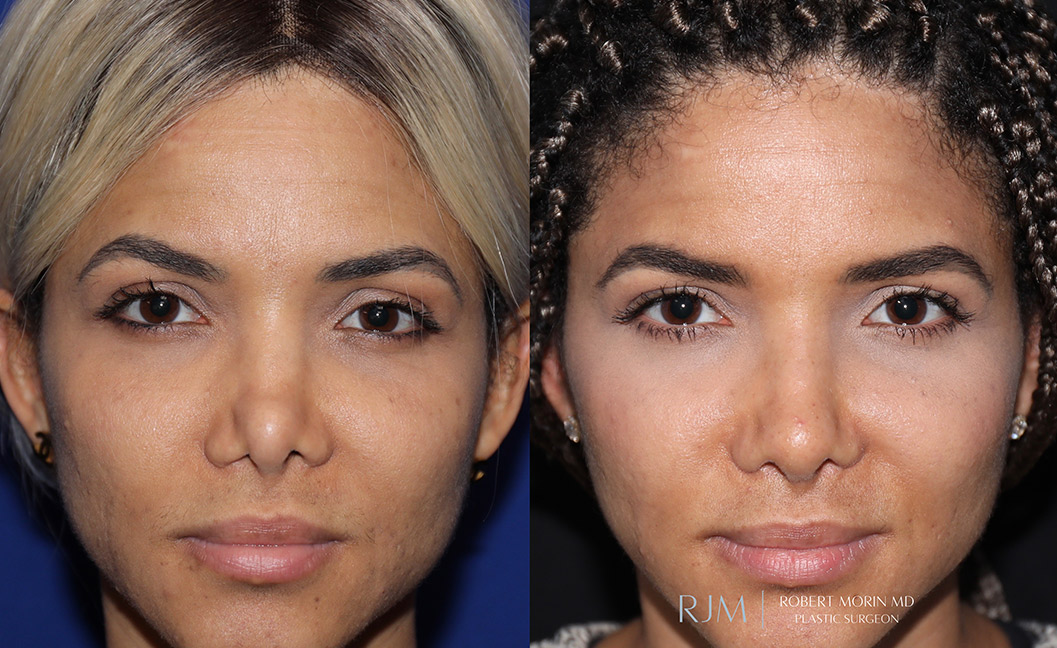
*Results may vary
At Dr. Morin’s New Jersey practice, revision rhinoplasty combines advanced techniques with attentive care to achieve your aesthetic and functional goals.
Your consultation involves a detailed assessment of your nose’s structure and a discussion regarding your previous surgery and desired outcomes. Dr. Morin emphasizes honesty and safety, advising if revision may not be in your best interest.
Dr. Morin’s team offers comprehensive pre-surgery guidance, which covers health history, necessary medication adjustments, and lifestyle changes. This preparation ensures you’re fully informed and ready for surgery.
Are you traveling in from outside the Hackensack area? Please plan to be in town a few days before your procedure for any preoperative consultations and tests. Also, you will need to be in town for at least a week post-op to allow for the initial healing phase. The exact timeframe can vary depending on your recovery.
The day before surgery, Dr. Morin’s team will conduct thorough pre-operative check-ins, answering any final questions you may have and reviewing essential instructions. This preparation helps ensure you’re comfortable, well-informed, and confident about the procedure and recovery process.
On surgery day, Dr. Morin’s expert team creates a welcoming, safe environment, ensuring you’re informed and comfortable before, during, and after surgery. You will be put to sleep with general anesthesia, which is administered by a board-certified anesthesiologist, during your rhinoplasty revision to maximize comfort and Dr. Morin will expertly place a split & potentially soft packing to ensure your nose is protected. From there, he will use the techniques discussed in your consultation, from grafts to fillers, to provide your dream results.
Post-surgery, Dr. Morin provides attentive care to monitor healing, ensuring comfort and satisfaction throughout recovery. Any soft packing placed is typically removed within 24 hours and your split will be removed around 7 days post-op.
You are generally advised to wait 1-2 weeks before short trips, as early swelling and healing occur in that time. For long flights, waiting 4-6 weeks is ideal to minimize swelling and discomfort. Please contact our office or bring any travel questions with you to your individualized consultation with Dr. Morin pre-op.
You may feel socially ready within 1-2 weeks after revision rhinoplasty as initial swelling and bruising subside. Dr. Morin’s team will provide tips for minimizing visible signs of recovery to help you feel your most confident.
Explore testimonials from Dr. Morin’s patients who have restored both function and confidence.
READ REVIEWSWith extensive expertise, Dr. Morin helps patients achieve refined, natural results customized to their unique needs. Begin your journey toward renewed confidence and improved nasal function!
Book a ConsultationIf you’re looking to correct breathing issues or aesthetic concerns from previous rhinoplasty, a consultation with Dr. Morin can help determine a safe, effective plan tailored to your needs.
View Gallery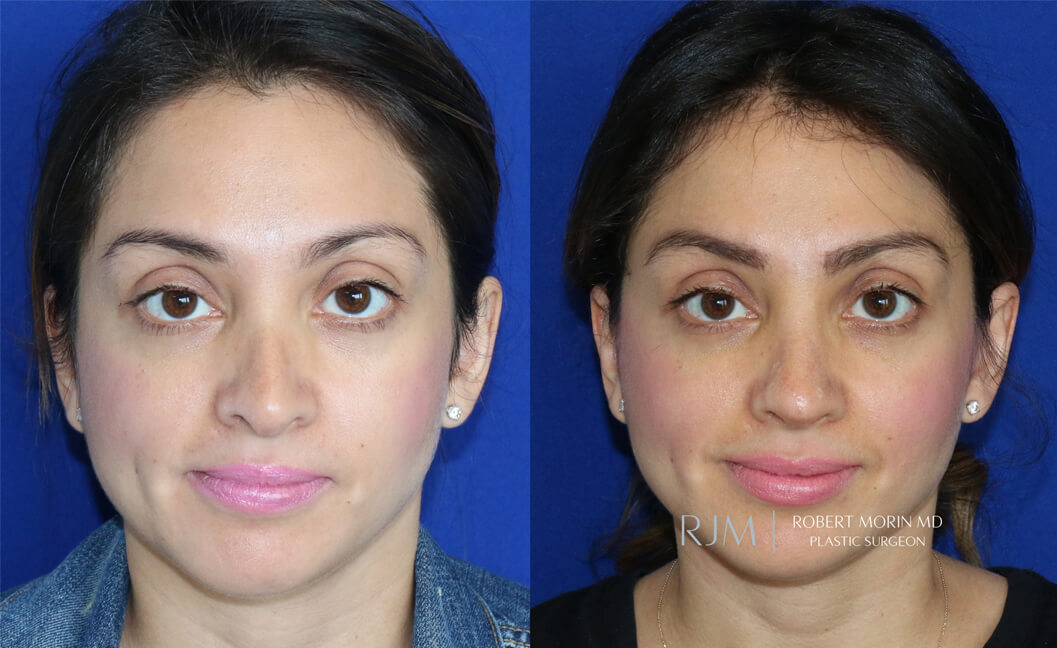
*Results may vary
Sometimes, after a primary rhinoplasty procedure, you may feel as though you want an enhancement of some kind. This is when you come to Dr. Morin at his New Jersey clinic!
Revision rhinoplasty tends to be riskier than the first surgery due to a reduced amount of bone and cartilage. Dr. Morin will determine if the procedure can be safely performed in your personalized consultation.
Common risks of revision rhinoplasty include, but are not limited to, the following:
Choosing a specialist in the field of plastic surgery will reduce the chances of surgical risks. Dr. Morin is a highly qualified New Jersey revision rhinoplasty surgeon and will be able to reduce the risks and complications of surgery.
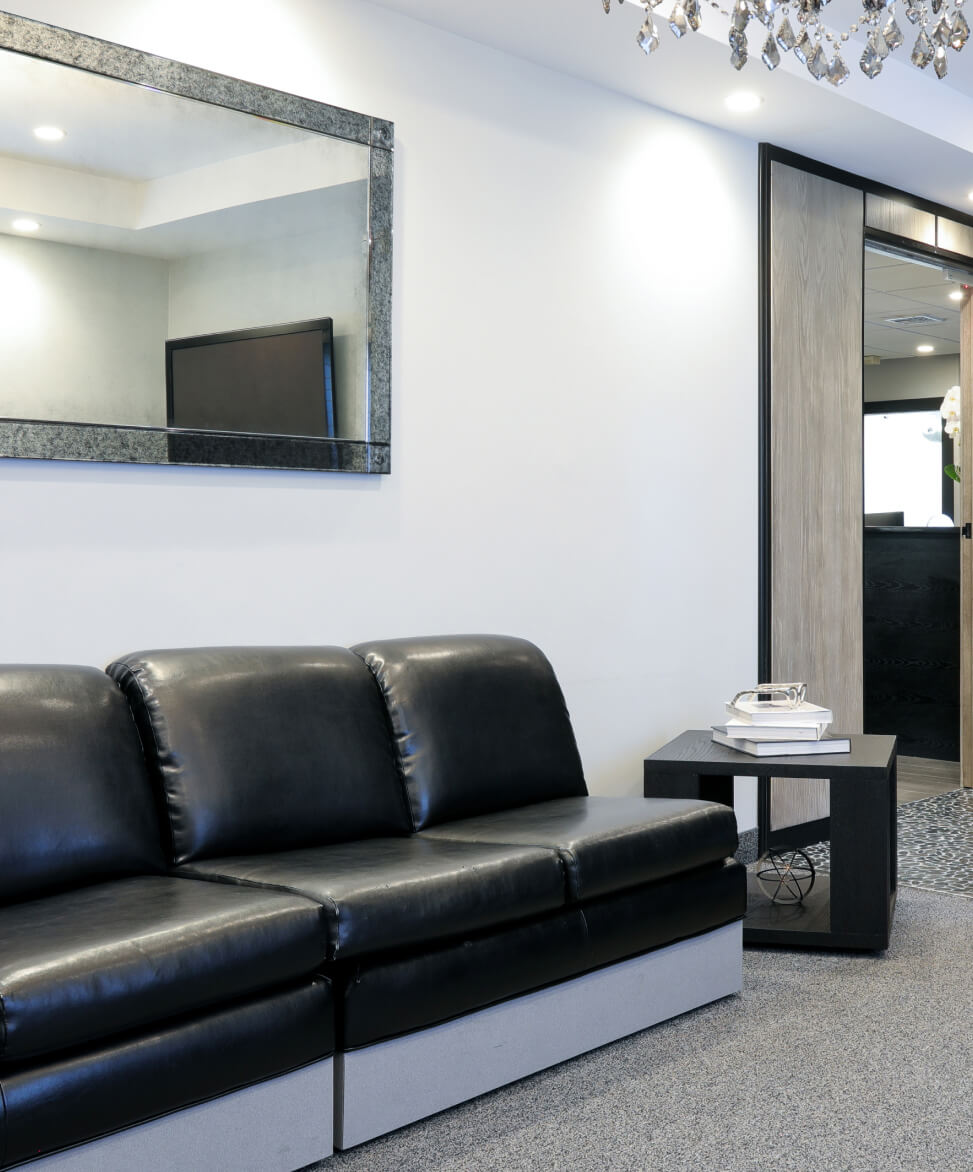
Your comfort is Dr. Morin’s priority throughout the revision rhinoplasty process! Expect one to two weeks of initial downtime to support recovery, during which you should avoid strenuous activities. Be mindful that, as with primary rhinoplasty, full results develop over a year as residual swelling and bruising gradually diminish. We will have multiple follow-up appointments, especially within the first three months, to ensure everything is healing properly.
Also, to aid your comfort, it is suggested that you take extra-strength Tylenol or another form of acetaminophen. Additional pain medication may be prescribed based on your discomfort levels.
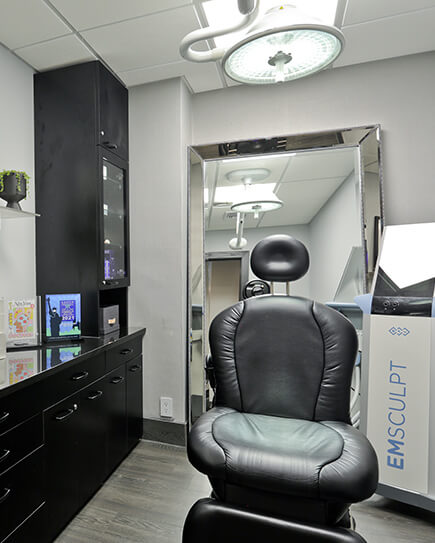
Dr. Morin combines extensive surgical experience with a genuine commitment to patient outcomes, making him an ideal choice for revision rhinoplasty in New Jersey! He has received numerous accolades for his work in the facial plastic surgery field, such as the 2022 Newsweek America’s Best Plastic Surgeons award for his work in rhinoplasty, and uses this award-winning skill to provide the form and function you crave for your nose.
Also, Dr. Morin’s patient-centered approach ensures he thoroughly understands your goals from your first consultation and provides compassionate guidance at every step. Dr. Morin works tirelessly to ensure your procedure suits your needs, from the techniques he decides to use to the comprehensive aftercare you’ll experience at his Hackensack, NJ office.
Ready to start looking your best? We offer virtual and in-office consultations.
After a rhinoplasty revision, it’s natural to notice that other areas of the face may seem out of proportion. Dr. Morin offers additional procedures to bring balance and achieve a harmonious look that complements your new nasal profile, all with the safety and convenience of a single surgical plan. Here are a few procedures that pair well with revisional rhinoplasty:
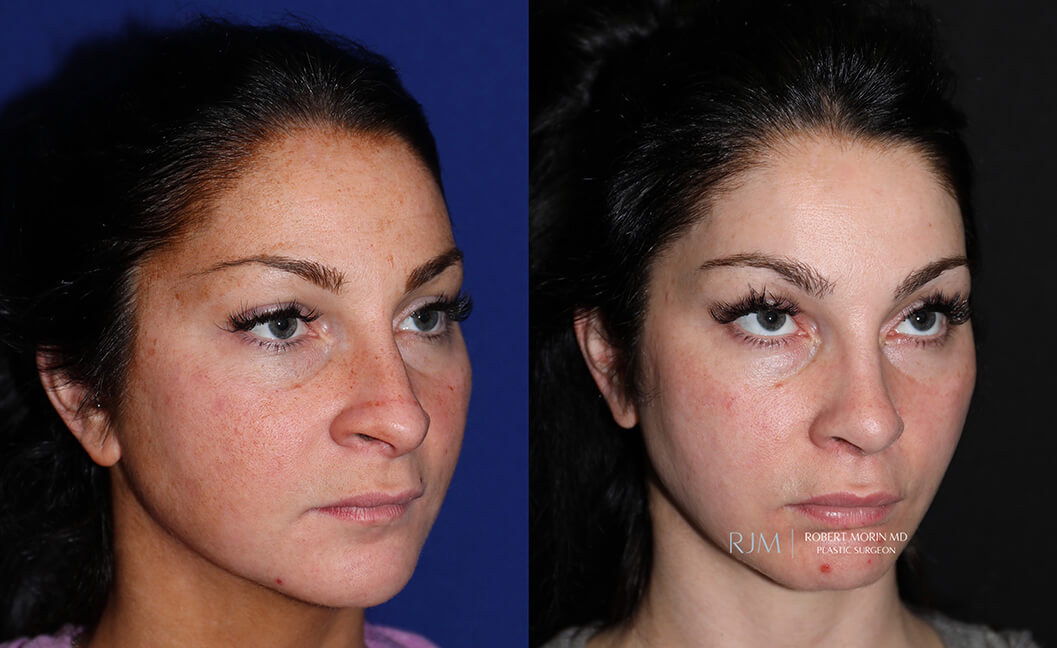
*Results may vary
Revision rhinoplasty is often more complex than primary rhinoplasty due to factors like scar tissue, changes in nasal structure, and prior adjustments. Dr. Morin will meticulously assess your unique nasal structure, accounting for any residual issues from the initial surgery. This complexity often requires a skilled surgeon, such as Dr. Morin, and additional planning to achieve both functional and aesthetic improvements.
The cost of revision rhinoplasty in New Jersey can vary depending on factors such as the complexity of the procedure, anesthesia needs, and any specific adjustments required. During your consultation, Dr. Morin’s team will provide a detailed estimate tailored to your goals and unique needs. Financing options may also be available to help make the procedure more accessible.
Yes, revision rhinoplasty can address both aesthetic and functional concerns by enhancing nasal appearance while improving airflow. Dr. Morin may use functional techniques to correct any structural issues that impede breathing, such as a deviated septum or collapsed nasal passages. This combined approach not only refines your nose’s appearance but also promotes better nasal function and comfort in everyday life.
Still need more information on what rhinoplasty revision is? Explore our blog for more insights on revision rhinoplasty and other related procedures!



Dr. Robert Morin is a board-certified plastic surgeon specializing in advanced rhinoplasty techniques and facial aesthetics. Known for his meticulous approach and patient-centered care, he brings a wealth of expertise to every procedure he performs.




Ready to start looking your best? We offer virtual and in-office consultations.